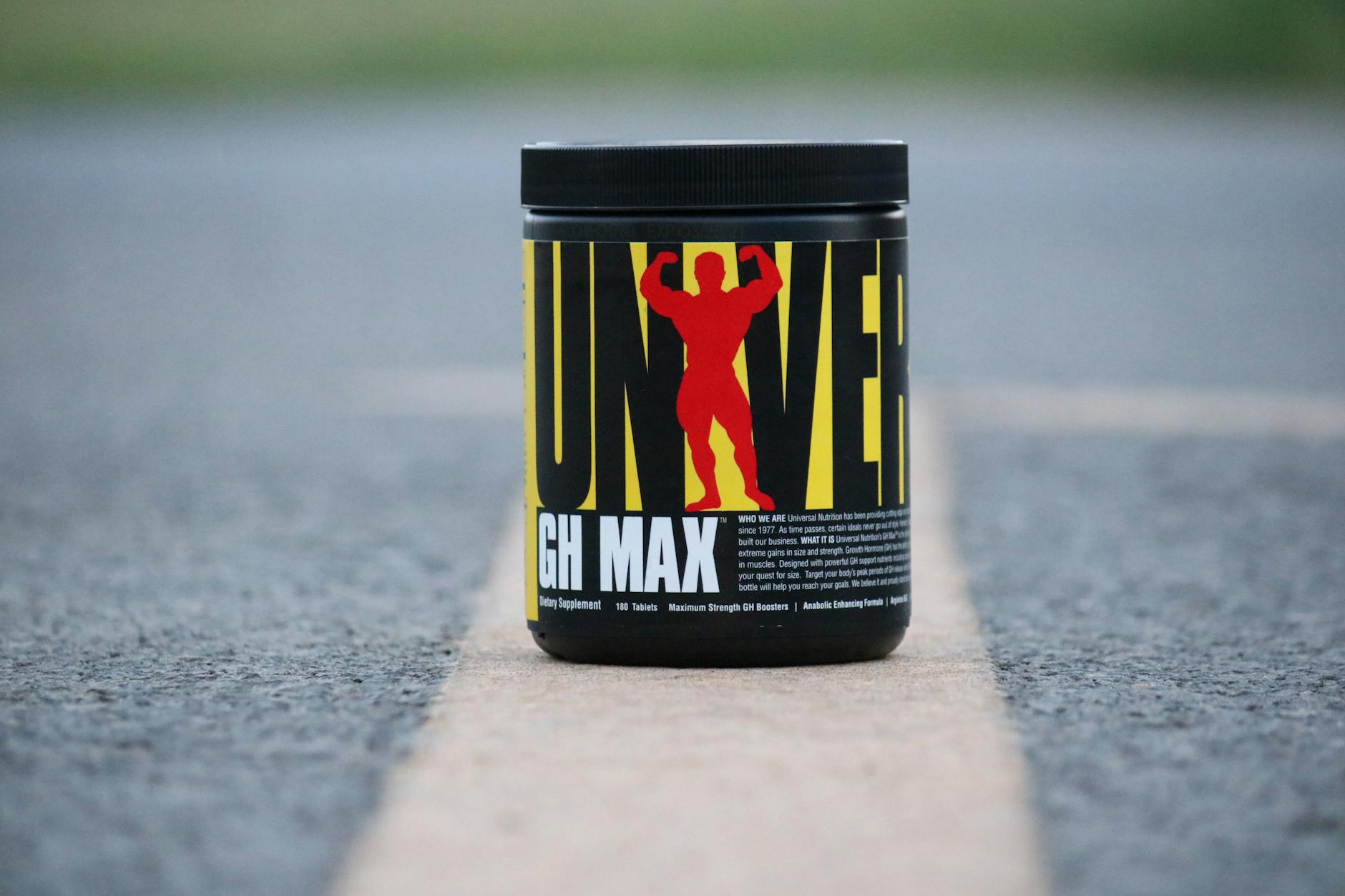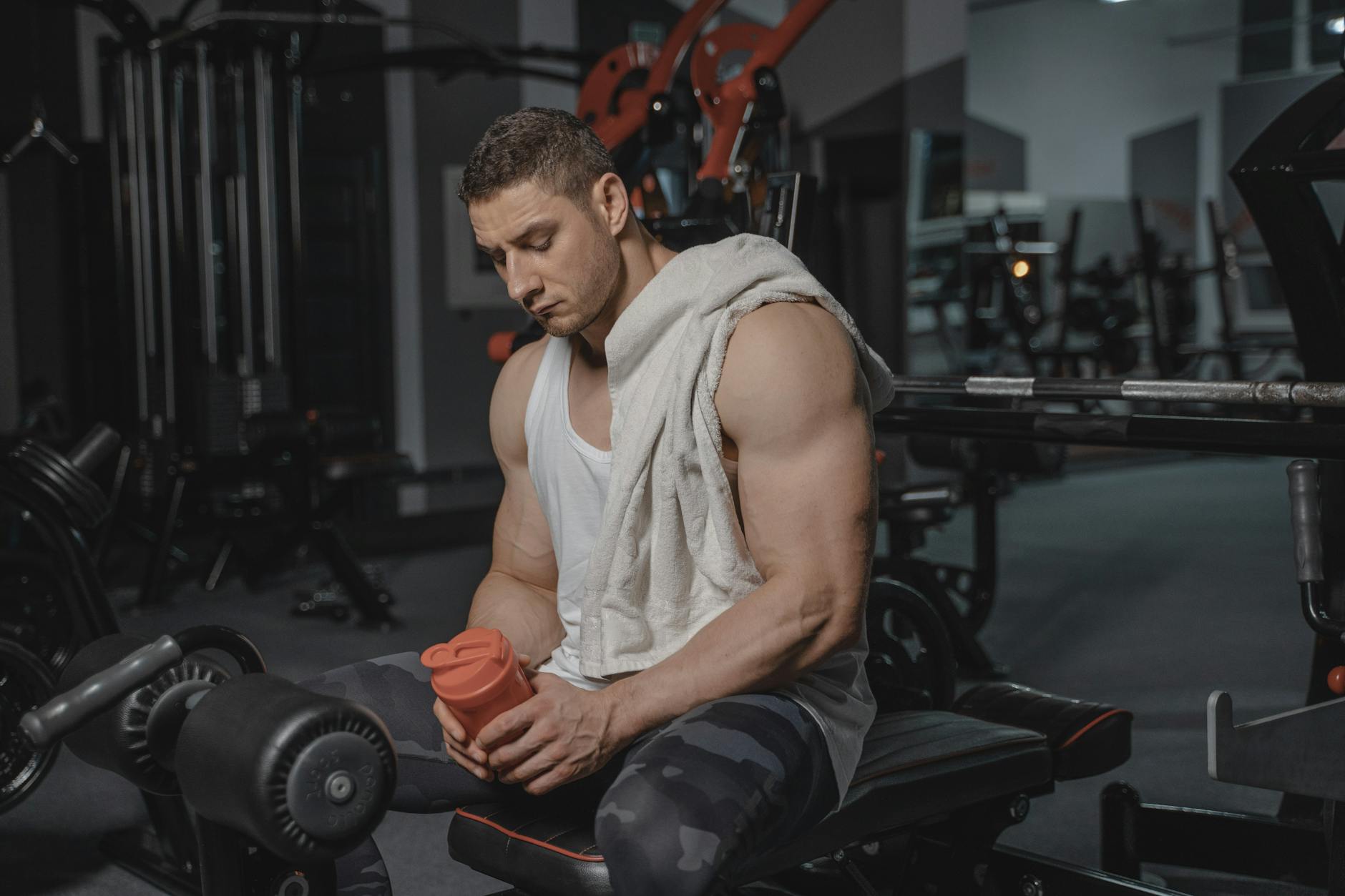Top 10 Muscle-Building Foods for Men and Women [2025 Guide]
Top 10 Muscle-Building Foods for Men and Women [2025 Guide]. Building muscle takes more than just lifting weights. What you eat every day makes a real difference in your progress.
The right foods help your body recover, build new muscle, and maintain steady energy for every rep, especially if you’re into home workout routines or want a fat-burning morning routine.
This post covers the Top 10 Muscle-Building Foods that give your body the best shot at growth. Nutrition works best when you pair it with smart movement and clean eating for beginners, whether you’re getting fit without the gym or working on your next PB.
Stick around if you want the basics and some smart tips, including how the best supplements for fat loss work with your meals. For even more on what to eat and how to boost your results, check out the latest updates on the Best fat-burning supplements.
Key Takeaways
Eating the right foods does more than fill your stomach—it directly influences how your muscles recover and grow. The Top 10 Muscle-Building Foods each provide exceptional benefits that make strength gains possible, especially when paired with home workout routines or a fat-burning morning routine.
If you’re focused on clean eating for beginners or getting fit without a gym, understanding these key takeaways will provide a clear path to follow.
 Photo by Kaboompics.com
Photo by Kaboompics.com
Highlights of the Top 10 Muscle-Building Foods
If you want your time in the kitchen and the gym to count, here’s what to focus on:
- Protein is king: Every food on the list is packed with high-quality protein, which is what your muscles crave after training.
- Complex carbs count: Foods like brown rice and oats do more than provide energy—they help you stay fueled for your toughest sets and support steady muscle growth.
- Healthy fats matter: Don’t skip healthy fats (avocado, nuts, olive oil). They help your body absorb key vitamins and support hormone levels, which makes muscle gains easier.
- Micronutrients support recovery: Many of these foods bring extra benefits, from iron-rich spinach to vitamin-packed sweet potatoes, so you recover faster and feel less sore.
- Balance is best: Combining protein, carbs, and fats in your meals keeps them satisfying, boosts recovery, and supports steady progress.
For a deeper list of top muscle-builders, take a look at this helpful resource on 26 foods to eat to gain muscle.
Practical Applications for Your Routine
You don’t need to overcomplicate things. Whether you train at home or on the go, these foods fit right into your daily plan:
- Pair lean proteins with meals: Try chicken, fish, or plant-based options like lentils and tofu.
- Prepare smart snacks: Greek yogurt, cottage cheese, or a simple protein shake are easy and muscle-friendly options.
- Use carbs wisely: Add quinoa or sweet potatoes to post-workout meals for lasting energy.
- Add healthy fats: Top your salads with olives or stir a spoonful of nut butter into oatmeal.
- Mix and match: Rotate between your favorites to keep it fresh and enjoy a broader range of nutrients.
Curious about what to avoid or add to maximize your gains? Read more about the 10 best foods to build muscle and what to avoid for extra practical guidance.
Supporting Your Results
Muscle-building foods are most effective when used as part of a comprehensive plan. If you want results beyond muscle, consider how the proper meals support a fat-burning morning routine and boost your results from fat-burning supplements or the best supplements for fat loss.
Everyone’s progress looks a bit different, but staying consistent with the Top 10 Muscle-Building Foods will help you stay strong, healthy, and ready for anything.
If you’re looking for additional tips on clean eating for beginners or building muscle without a gym, check out the advice on clean eating made simple.
Why Nutrition Matters for Muscle Growth
Nutrition is the unsung hero behind every fundamental muscle transformation. You can lift heavy and train smart, but if your meals are off-target, you’ll always be a step behind in your pursuit of progress. The right foods on your plate turn those challenging sets and reps into real gains, steady recovery, and consistent power for your next workout.
Eating for muscle isn’t complicated, but it does require a clear understanding of how food fuels new muscle growth and supports every goal, from home workout routines to a fat-burning morning routine.
 Photo by Nawaz Ali
Photo by Nawaz Ali
The Science: How Muscle Grows
Growing muscle isn’t just about moving weights—it’s about what happens inside your body after each workout. Here’s the process in a nutshell:
- Workouts create tiny muscle tears: When you train hard, your muscle fibers break down slightly, triggering an alert for your body to repair and build stronger tissue.
- Protein kicks in: Amino acids from the protein you eat rush in to patch and rebuild those fibers, making them thicker and more rigid.
- Rest and nutrients finish the job: Growth happens during recovery—meaning sleep and what you eat are just as important as the sets you complete.
Without enough of the proper nutrients, your muscles don’t repair fully or grow larger. That’s why diet isn’t just a minor piece of the puzzle—it’s the foundation. For more on how nutrition supports muscle recovery, see this detailed review on Nutrition and Muscle Recovery.
Protein, Carbs, and Fat: Each Piece Matters
There’s a lot of talk about macronutrients in fitness communities, and for a good reason—each major food group plays a specific role in muscle growth:
- Protein: This is what your muscles are made from. Without enough protein, your body can’t build new muscle tissue, no matter how hard you train. Aim for a protein-rich food with every meal, especially after a workout.
- Carbohydrates: Carbs aren’t the enemy. They give you the fuel to power through each workout and also help shuttle protein into your muscles. Think brown rice, oats, sweet potatoes, and quinoa.
- Fats: Healthy fats from sources like olive oil, avocados, and nuts keep your hormones steady and support recovery. Don’t skip them—they play a bigger role than most people realize.
Combining these foods provides a steady source of energy, optimal recovery, and a strong environment for muscle growth. This balanced approach is the backbone of the Top 10 Muscle-Building Foods.
Why Nutrition Maximizes Your Effort
It’s tempting to focus only on lifting, but what you eat throughout the day shapes how your body responds to that work. Food choices help you:
- Recover faster between workouts, especially for those who mix home workout routines and a fat-burning morning routine in their day.
- Keep up energy and power during tough training sessions.
- Minimize soreness, allowing you to train more frequently and reduce time spent on the sidelines.
One holistic strategy for beginners is clean eating, where you focus on whole foods, minimize processed junk, and pay attention to how your meals make you feel. If you’re looking for practical steps, consider these Clean Eating Tips for Beginners, which align perfectly with building lean, strong muscle.
Diet Plus Exercise Drives Real Muscle Gains
Pairing the proper eating habits with exercise multiplies your progress. Consistent strength training, fed by key macronutrients, leads to lasting change—not just quick wins. If you’re prioritizing muscle growth, combining smart nutrition and solid workouts creates the most reliable results.
As highlighted in these muscle-building fundamentals, your body grows from what you do in the gym and how you feel after every bite.
A smart diet is also the gateway to achieving other fitness goals, such as getting fit without a gym, starting a fat-burning morning routine, or maximizing the benefits of your best supplements for fat loss. Every journey is personal, but focusing on the top muscle-building foods keeps you consistent, energized, and ready to chase bigger goals.
Top 10 Muscle-Building Foods
A proper diet can help you build muscle faster, boost recovery, and maintain your workout intensity. What you eat makes a difference, whether you’re hitting the weights, following home workout routines, or starting a fat-burning morning routine.
These Top 10 Muscle-Building Foods work for both men and women, encompassing both animal- and plant-based options. Many work on clean eating for beginners and help anyone get fit without the gym. Let’s break down the best choices, their nutrition perks, and how they add up to better results.
1. Eggs
Power-packed and versatile, eggs are a staple for muscle growth. Each egg delivers approximately 6-7 grams of complete protein, along with healthy fats and vitamins such as B12, D, and choline. The yolk isn’t just for flavor—it offers nutrients that help support muscle recovery and hormonal balance.
Eggs are easy to include in any meal. Scramble them for breakfast, add them to salads, or boil them for snacks. Research suggests that whole egg consumption may benefit muscle mass, not just from the protein but from other nutrients in the yolk as well. Explore more about the effect of the entire egg intake on muscle mass.
2. Chicken Breast
Chicken breast is classic for a reason. It’s lean, high in protein, and low in saturated fat, making it an ideal choice for promoting muscle growth without excess calories. A standard serving (approximately 100 grams) contains roughly 30 grams of high-quality protein.
Chicken breast is a versatile ingredient that lends itself easily to meal prep, curries, or salads. It supports weight management and may even boost mood, thanks to its amino acid profile. Discover the health benefits of chicken to see how it supports muscle health and overall wellness.
3. Greek Yogurt

Photo by Ella Olsson
Greek yogurt is thick, creamy, and packed with both fast- and slow-digesting proteins. Each cup can deliver 17-20 grams of protein, along with calcium and gut-friendly probiotics. The combination of casein and whey is ideal for those seeking muscle gain and sustained recovery, especially after evening workouts.
Including fat-free Greek yogurt during a 12-week exercise plan has been linked to greater increases in strength and muscle thickness. Read more about Greek yogurt for strength and recovery.
4. Salmon
Salmon brings a muscle-friendly combo of protein and omega-3 fatty acids. Around 22 grams of protein per 100-gram serving supports lean muscle mass, while healthy fats help reduce inflammation and accelerate recovery.
Salmon is especially beneficial for active lifestyles and athletes, as it supports muscle repair after workouts. See how salmon can boost your athletic performance.
5. Lean Beef
Lean beef is one of the best sources of iron, zinc, and B vitamins, all of which play key roles in muscle growth and repair. A 4-ounce serving easily provides about 30 grams of protein, giving your muscles what they need for repair.
The iron in beef also helps carry oxygen to muscles during training. For more about meat and muscle recovery, check out the science behind lean beef and muscle recovery.
6. Quinoa
Quinoa stands out as a plant-based powerhouse. It’s gluten-free, high in fiber, and one of the only grains that is a complete protein, delivering all nine essential amino acids. A cup of cooked quinoa provides approximately 8 grams of protein and is rich in minerals such as magnesium and zinc.
It’s simple to add to salads, bowls, or as a side in meal prep. Get a full run-down of the nutritional highlights and health benefits of quinoa.
7. Cottage Cheese
Cottage cheese is rich in casein, a slow-digesting protein that helps deliver amino acids to your muscles over several hours—great for overnight muscle repair. With a cup serving up about 25 grams of protein and a solid dose of calcium, it’s an easy snack or meal base if you’re into fat-burning supplements or clean eating for beginners.
For firsthand experience and tips, bodybuilders often rave about cottage cheese for clean bulking.
8. Tofu
Tofu is a go-to choice for anyone seeking plant-based protein. Made from soybeans, tofu is rich in protein (approximately 10 grams per half-cup), iron, and calcium. It’s great for vegans or anyone looking for variety beyond animal proteins.
Tofu pairs well with stir-fries, salads, or breakfast scrambles. Learn more about tofu as a plant-based muscle builder.
9. Tuna
Tuna packs a significant protein punch, especially for those seeking muscle without excessive fat. Each 100-gram serving provides approximately 25 grams of protein and a boost of B vitamins. It’s portable, budget-friendly, and makes smart meals or snacks for those following home workout routines or a busy, on-the-go lifestyle.
Here’s what athletes are saying about tuna for muscle building.
10. Lentils
Lentils provide a plant-based protein that’s easy to prepare and rich in fiber, iron, and B vitamins. A cup of cooked lentils contains approximately 18 grams of protein, along with complex carbohydrates that provide long-lasting energy.
They fit perfectly into stews, salads, or wraps—ideal for anyone looking to get fit without a gym or following a fat-burning morning routine. Discover more about why lentils are a wise choice for recovery food.
Ready to put these Top 10 Muscle-Building Foods into action? Even if you train at home, you can Achieve fitness results at home by building your meals around these options. This approach is practical for achieving muscle gain, burning fat, and maintaining energy throughout the day.
How to Integrate Muscle-Building Foods Into Your Routine
Adding the Top 10 Muscle-Building Foods to your daily habits doesn’t need to be complicated. With a few tweaks and a little planning, you can set yourself up for better results, whether your goal is to fuel home workout routines, build lean muscle, or maintain steady energy. I use these same steps with my coaching clients—and the payoff is always worth it.
Make Meal Prep Work for You
Meal prep is your secret weapon. When healthy, high-protein foods are ready to go, you’ll always have an option that supports your goals. I recommend picking one or two days a week to cook in bulk.
You can start with basics like grilled chicken, hard-boiled eggs, or a big batch of quinoa. Portion these into containers so you can grab more muscle-building meals, even on your busiest days.
Need inspiration? Mix and match from your Top 10 Muscle-Building Foods:
- Grilled chicken with sweet potato and steamed broccoli
- Egg muffins (baked with spinach and a sprinkle of cheese)
- Salmon filets with quinoa and roasted veggies
- Tofu stir-fry with brown rice and edamame
- Overnight Greek yogurt oats with berries and nuts
Even if you’re new to meal prepping, you can find simple meal prep ideas for muscle gain that fit any schedule.
Simple Swaps for Busy Days
Swapping in muscle-friendly foods is easier than most think. Eggs go beyond breakfast—add them to salads for lunch or slice on toast. Greek yogurt can replace sour cream or be blended into smoothies for a healthier option.
Tuna and lentils make quick, portable lunches. When you keep these foods close, you’ll never have to fall back on less healthy choices when you’re in a rush.
Try these quick swaps:
- Use Greek yogurt instead of mayo for creamy meals.
- Add quinoa to a grain bowl instead of white rice.
- Snack on cottage cheese or a protein shake after your workout.
Check out this straightforward breakdown of 26 Foods to Eat for Muscle Gain for more inspiration on smart swaps.
Pair With Your Home Workout Routines
 Photo by ibrahim hafedh
Photo by ibrahim hafedh
I notice the most significant gains when clients time their meals to coincide with their workouts. For morning training, I have them enjoy a carb-rich breakfast, such as oats and eggs or Greek yogurt with fruit, ideal for a fat-burning morning routine.
Post-workout, I suggest combining lean protein (such as chicken, tuna, or tofu) with healthy carbs (like quinoa or sweet potatoes) for quicker recovery and reduced soreness.
If you’re struggling to stay on track with a routine or want to design a plan that fits your schedule, I’ve shared a comprehensive guide on how to build a Home Workout Routine.
Stay Consistent, Not Perfect
You don’t have to hit every “superfood” at every meal. Focus on building a routine with foods you enjoy and switch them up to keep things fresh. If convenience is a priority, opt for options that can be prepared ahead of time or purchased ready-to-eat, such as a rotisserie chicken or pre-cooked lentils.
Here are my go-to strategies for staying consistent:
- Rotate proteins (such as chicken, eggs, and tofu) every week.
- Prep grab-and-go snacks like boiled eggs or Greek yogurt.
- Create a fat-burning supplement shake after your training session, combining protein and fruit.
- Plan your main meals and allow some flexibility for snacks.
This practical approach suits any lifestyle—whether you’re interested in clean eating for beginners or want to start getting fit without a gym.
Choose foods that help you feel good and make it easy to maintain momentum. Any step forward builds better habits over time and keeps the Top 10 Muscle-Building Foods working for you.
Supporting Muscle Growth: Supplements, Fat Loss, and Recovery
Building muscle isn’t just about what you eat or how much you lift. It’s also about supporting your body in clever, science-backed ways.
While the Top 10 Muscle-Building Foods establish a solid nutritional foundation, examining supplements, fat loss techniques, and recovery strategies can yield faster, more visible results, whether your goal is to achieve a leaner appearance or build muscle with home workout routines.
Here’s how these elements fit together for both men and women.
 Photo by Tima Miroshnichenko
Photo by Tima Miroshnichenko
Enhancing Nutrition with Supplements
The Top 10 Muscle-Building Foods get you 90% of the way. But sometimes life gets busy, or you need an extra edge. Well-chosen supplements can help fill nutritional gaps, making it easier to meet your protein goals, recover more quickly, and support healthy fat loss.
Here’s how I recommend clients use supplements for real muscle and fat loss results:
- Protein powders: Easy way to boost daily protein, especially after workouts. Mix with water or add to smoothies.
- Creatine: Supports strength and rapid muscle recovery. A simple five-gram dose of protein post-workout can improve progress.
- Omega-3s: These help reduce muscle soreness and support heart health—great for anyone getting fit without the gym.
- Multivitamins: Help cover those “just in case” moments when your diet falls short.
If you’re curious about which products are proven and safe, check my breakdown of the best weight loss supplements in 2025. It covers trusted options that work, not just gimmicks.
Linking Fat Loss & Fat-Burning Morning Routines
Supporting lean muscle growth often means reducing body fat simultaneously. I love using a fat-burning morning routine to jumpstart my metabolism, improve energy, and keep my appetite in check. Muscle growth thrives when your body feels energized and recovered—not sluggish.
A smart fat-burning routine can look like this:
- Fasted cardio or light weights first thing (even a brisk walk counts)
- Follow with a breakfast balanced in protein (eggs, Greek yogurt) and slow carbs (oats, sweet potato)
- Hydrate well and add green tea or coffee for a metabolic boost
For a proven plan, see my article on fat-burning morning routines. Pairing these routines with the Top 10 Muscle-Building Foods helps build muscle that shows, not just grows under the surface.
Looking to step it up? Discover the top morning fat burners that support a healthy metabolism and appetite control. Fat-burning supplements can help the process if you’re honest about your nutrition and stay active.
How Recovery Supports Muscle and Fat Loss
Growth doesn’t happen in the gym; it happens after, during rest, and high-protein recovery meals. Skipping recovery is like building a house with shaky walls; the benefits are short-lived. Here’s what works best for most people:
- Get enough sleep (at least 7 hours) to support workout recovery and balanced hormones.
- Eat a protein-rich snack, such as Greek yogurt or a shake, before bed to help your muscles recover overnight.
- Use stretching or foam rolling to promote blood flow and decrease soreness.
- Rotate muscle groups throughout your week, especially if you train with home workout routines or incorporate a fat-burning morning routine.
I combine these strategies into my Clean Eating for Beginners approach and recommend the best supplements for fat loss. The small things—like having a solid bedtime snack or stretching daily—add up.
Building a Lasting Routine
Anyone can use smart supplements and routines to support muscle growth and fat loss. The biggest wins come when you pair the Top 10 Muscle-Building Foods with realistic routines and a focus on recovery.
This is true if your priority is getting fit without the gym, sculpting a leaner body, or pushing hard in the weight room. Set yourself up for success with the right tools, and progress will follow.
For more tips and consistent routines, check out my advice on clean eating and simple strategies that support muscle and fat loss.
Frequently Asked Questions About the Top 10 Muscle-Building Foods
Everyone has questions as they begin to focus on nutrition and muscle growth. I’ve gathered some of the most common questions people have about the Top 10 Muscle-Building Foods, home workout routines, and innovative strategies for building muscle, whether you’re brand new to the topic or want to ensure you’re getting the details right.
Let’s clear up the confusion so you feel confident with every bite and rep.
How Much Protein Do I Need for Muscle Growth?
The protein question pops up in almost every conversation. For most active adults, aiming for approximately 0.7 to 1 gram of protein per pound of body weight daily supports muscle growth.
That means someone who weighs 150 pounds should aim for a daily intake of between 105 and 150 grams, spread over several meals. Quality matters, so lean meats, eggs, dairy, and plant-based picks like quinoa and lentils all earn top marks for your daily plan.
Can Vegetarians or Vegans Still Build Muscle?
Absolutely. Foods like tofu, lentils, quinoa, and Greek yogurt (or dairy-free substitutes for vegans) can deliver complete proteins and key nutrients. Mixing a variety of plant-based proteins covers your amino acid needs. For more insight on using plant-based foods for muscle growth, check out this practical list from 26 Foods to Eat to Gain Muscle.
Do I Have to Eat Every Three Hours?
You don’t need to set a timer. There’s no magic to eating every three hours for muscle gain—focus on hitting your total daily protein and calorie targets instead. For many people, three main meals and a protein-rich snack (or two) fit perfectly.
Flexibility here helps you stick with clean eating for beginners and makes your plan easier to manage whether you’re working, training, or traveling.
What About Carbs and Fats—Should I Limit Them?
Carbs and healthy fats both play strong supporting roles. Complex carbs, such as oats, sweet potatoes, and quinoa, help restore glycogen after intense home workout routines, fueling recovery and subsequent sessions.
Healthy fats from salmon, avocado, and nuts support hormones that power muscle growth and keep you satisfied longer, making them perfect for any fat-burning morning routine or those aiming for the Best supplements for fat loss.
Are Supplements Necessary for Muscle Gain?
Supplements fill in the gaps but are never a replacement for solid meals. Protein powders, creatine, and omega-3 fatty acids can be beneficial when life gets busy or your diet needs a boost. Build a base from whole foods first, then add fat-burning supplements or other supplements as needed.
How Can I Build Muscle if I’m Getting Fit Without the Gym?
Not everyone trains in a big gym, and that’s okay. Muscle-building foods are beneficial for everyone, including those who focus on home workout routines or want to get fit without a gym.
Push-ups, bodyweight squats, and resistance bands paired with high-protein meals go a long way. Combine smart movement with the Top 10 Muscle-Building Foods for results you’ll see and feel.
 Photo by Natalia Hawthorne
Photo by Natalia Hawthorne
Should I Avoid Eating at Night?
You don’t need to worry about eating before bed—especially if your goal is muscle growth. A protein-rich snack, such as cottage cheese or Greek yogurt, helps your muscles recover while you sleep. What matters most is your total nutrition throughout the day, not the minute you eat your last meal.
How Do I Stay Consistent with Healthy Eating?
Keep things simple and satisfying. Prep foods from the Top 10 Muscle-Building Foods in advance, rotate choices so meals never get boring, and stash quick snacks (like boiled eggs or tuna packs) for busy days. Routine—not perfection—gets the best results. For more ideas, see my tips on clean eating for beginners.
Where Can I Learn More About What Foods Build Muscle?
If you want even more detail or new ideas for your plan, 26 Foods to Eat to Gain Muscle is packed with variety and advice you can put to use right away.
Stay curious, fuel your goals, and keep working toward that stronger, healthier body.
Conclusion
Choosing the Top 10 muscle-building foods provides your body with a solid foundation for more vigorous workouts, improved energy, and faster recovery. These foods bring a steady supply of protein, complex carbs, and healthy fats that support both men and women, whether you’re into home workout routines or want a fat-burning morning routine.
Real progress comes from pairing the right foods with consistent exercise and the innovative use of fat-burning supplements or the Best supplements for fat loss. Staying steady day after day means more than chasing perfection—focus on repeating balanced meals and practical habits instead.
If you’re starting or want to refresh your plan, clean eating for beginners and routines for getting fit without the gym both offer real benefits.
I always remind my clients that nutrition, movement, and recovery work best when combined and kept simple. For even more tips on keeping healthy habits strong, see these Effective Ways to Lose Fat Naturally: Proven Strategies to Burn Fat.
Thank you for reading and taking action toward a more substantial and healthier body. What will you put into your next meal to keep momentum going?







